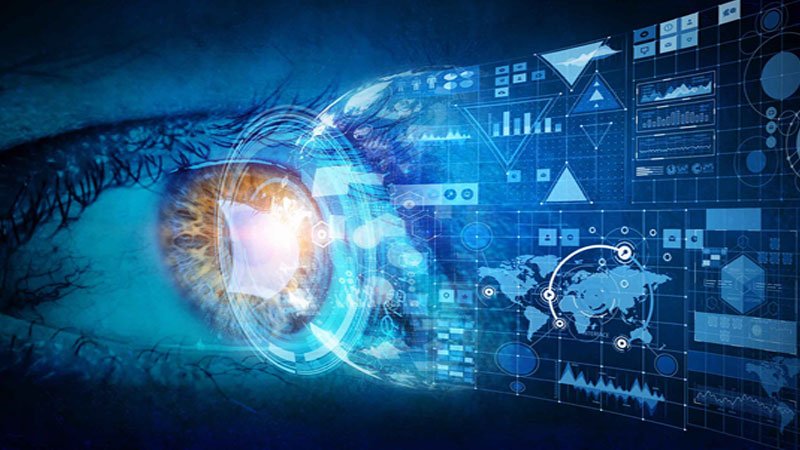The fourth industrial revolution is now a reality. There is no way to rebuff it anymore. How do we feel, how do we work, how do we live, how do we travel – everything will be changed. The fourth industrial revolution is happening currently with the Internet combining intelligence.
।। Rajon Shahabuddin ।।
Rapid economic, technological, and social changes are creating a world that is ever more interconnected. To take advantage of global market opportunities, companies must hire workers with global competence—that is, the capacity and disposition to understand and act on issues of global significance. Technical and vocational education (TVET) educators now face a critical new imperative: to prepare all students for work and civic roles in a world where success increasingly requires the ability to compete, connect, and cooperate on an international scale.
The fourth industrial revolution is now a reality. There is no way to rebuff it anymore. How do we feel, how do we work, how do we live, how do we travel – everything will be changed. The first industrial revolution is about a steam engine, the second revolution is about electricity, the third is about internet and computer. The fourth industrial revolution is happening currently with the Internet combining intelligence.
Let me start with a fresh example. A man can fairly check weather forecasts or traffic with Google in the morning, drive to the office using automated cars, robots can welcome him, and he can use artificial intelligence to get an idea of the future of the business. One can design business models using learning, control home electronics and appliances through the Internet of Things and many more.
Five-g Internet will be launched soon in Bangladesh. It can drastically change the business model, quality of life, education, digital and social media that we’ve been seeing for the past decade. The fourth industrial revolution can be truly implemented through high quality education and research. In many parts of the world, countries are preparing their manpower to take advantage of the Fourth Industrial Revolution (FourIR). This is why these countries have integrated artificial intelligence and robotics in their education, starting from the elementary level up to higher education to leading the forearm of their human resources cognitive mind.
Now let’s scrutinize how Bangladesh can be an emerging role model of the fourth industrial revolution in the world. First, the foundation of digital Bangladesh is solid. The implementation of ‘Digital Bangladesh’ in the last six years has affected the ICT sector in the daily life of people across almost every sector, across the country. Union Digital Center (UDC) is now connecting via fiber optical cable; schools are now equipped with Sheikh Russell Digital Labs; thousands of interactive content and e-books have been designed and developed; creating 3 economic zones, etc. Thus, Digital Bangladesh has created a suitable platform for launching FourIR in our country.
It is extremely good news that our economic growth is gaining momentum. The per capita income of Bangladesh increased from $ 120 to $ 2,600 in the fiscal year 2021-27. In November 2026, the UN General Assembly adopted a proposal to promote Bangladesh from the category of LDC. The government plans to become a rich country by equipping the people equally with a per capita income of $ 1,000 by 20 years. The possibility of a fourth industrial revolution should start without any delay. The size of the country’s GDP will increase from $ 222 billion today to $ 2 trillion in 20 years. Now the government can launch higher education loan programmes. Higher education projects, such as government subsidies and full payment, should be based on the taxpayer’s income and employment opportunities. The government can provide even more subsidies to FourIR-related courses and programs.
The proportion of the working age population Bangladesh ranks 5th in terms of volume. But in terms of population, we are the eighth largest country in the world. We now have more working-age people (3-5 years) than ever before. It is now 3 percent and will rise to 5 percent by 2020. The advent of the Fourth Industrial Revolution will cause many to lose their jobs. But more jobs need to be created. So if this large population can be transformed into a skilled workforce for FIR, it will strengthen our ongoing economic and social development.
The emphasis on technical education is a timely demand now in Bangladesh. Accelerating the $ 5 million valuation and strengthening skills for economic change, the ‘Asset’ project will create more than 3 million youth and staff with the skills needed for future work. There will be a technical school and college in each upazila and initiatives are being taken to establish the Upazila ICT Training and Resource Center for Education. Graduates don’t have to wait for jobs in tech education; instead, they create job opportunities for others.
The importance of the industry-academia connection is realized. About two million new entrants join the labor force every year, but still 5.7 percent of undergraduates point to a lack of skills in unemployment. As a result, foreigners dominate our job market at technical and management levels in various industries, corporate companies and multinational companies. According to the National Skill Development Authority, the trend leads to a $ 6 billion remittance from Bangladesh every year. Now the government has misunderstood this and emphasized curriculum, Outcome based education, various level internship programs, etc. as per need.
Future jobs will be in a state that the machine can do large part of it, as well as creative endeavours, areas of social interaction where people can beat the machines, and those areas will be open to job creation. Now our policy makers should rethink education policy by prioritizing fourth industrial revolution-related research and innovation, so that we can survive as a competitive, innovative and efficient country on a global level. So let’s invent, not imitate.
The writer is a lecturer of English, Shaheed Muktijoddha Smriti B. M. College, Chuadanga. Email: rajon.itcitaly@gmail.com

